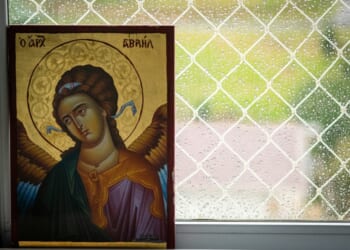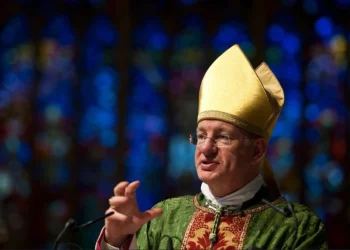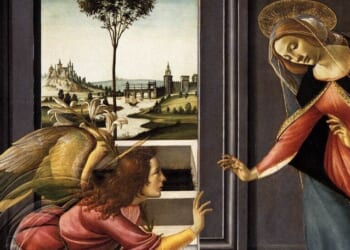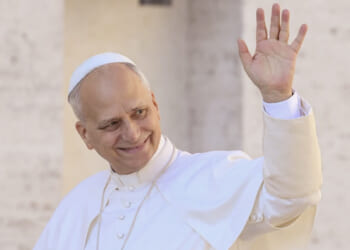As hard as war is, often the hardest part is coming home. Life and family have moved on, and the way you see the world—and yourself—has fundamentally changed.
Marine veteran and classicist Karl Marlantes, in his book What It Is Like to Go to War, describes this transformation through the ancient lens of the Temple of Mars, the Roman god of war. He writes: “I had entered the temple of Mars, where not only were humans sacrificed, including me, but I was also the priest.” Returning home, we swiftly learn there is really no way out of the Temple of Mars. But there may be something greater: a redeployment to a deeper mission.
The Challenge of Coming Home
Our modern culture is certainly not the first to experience war, but as combat veteran and psychology professor Lt. Col. Dave Grossman notes, we are the first to do so without shared rituals of reintegration. In On Killing and On Combat, Grossman argues that traditional societies had communal rites to help warriors come home mentally and spiritually—reconnecting them to renewed identity through reflection and ritual.
Journalist Sebastian Junger laments in Tribe that our culture has lost that sense of community. He writes, “The modern world has drastically reduced the role of community in people’s lives, and that loss has taken a severe toll on their emotional well-being.” Today, we send men and women into battle as a unit, and yet expect them to reintegrate alone.
A 2022 study in Military Psychology calls this process reculturation, identifying a clash between veteran’s identity and modern society. Many resolve that tension by withdrawing, cutting themselves off rather than learning to integrate what they’ve seen and done.
To heal, we must confront the full reality of our experience—including suffering, guilt and mortality. But our post-modern society avoids these existential truths. And so, veterans often carry the cost of that denial: loneliness, isolation, and despair.
It need not be this way. Acceptance and Commitment Therapy (ACT), one of the most evidence-based therapies today, teaches that we don’t need to take our thoughts literally. “I’m not who I used to be.” “No one will understand what I went through.” “How can I ever be forgiven?” Instead of arguing with those thoughts, ACT invites us to ask: where do these thoughts take me? Toward meaning and virtue—or toward isolation and despair?
This research reminds us that humans need two things to heal: meaning and community. A 2023 piece in the Journal of Veteran’s Studies found that, among those with PTSD, brain injuries, or chronic pain, veterans were far more likely to flourish when they had social support and a clear sense of purpose. Similarly a 2014 study in Psychological Medicine of over 3000 US Veterans showed that purpose, religiosity, and community promoted healing and growth—even amid severe trauma.
The truth is, warriors are needed in both war and peace. Which brings us to St. Francis of Assisi—a solider-saint who found his greatest mission not on the battlefield, but in rebuilding the Church.
The Soldier-Saint
Today, St. Francis is often depicted in serene garden statues. But long before he was a man of peace, he was a man of war.
Born to a wealthy merchant family, Francis dreamed of glory. When war broke out between Assisi and Perugia, he eagerly enlisted. But after a crushing defeat, many of his friends lay dead, and Francis was taken prisoner. He spent a year in captivity. Outwardly cheerful, he returned home a changed man—withdrawn and somber. He may have suffered what we’d now recognize as PTSD.
Soon after, he set off for another Crusade, still chasing his dream. But on the way, he fell ill and received a vision from Christ: “Go back home. It will be revealed to you what you must do.”
Francis obeyed. On the way he met a leper on the outskirts of town. Moved with compassion, he embraced him. That small act changed his life. Another vision followed: “Rebuild my church.” At first, Francis took it literally, fixing a crumbling local parish. Over time, he realized it was the universal Church Christ meant.
His radical simplicity and joy attracted many—especially fellow veterans. These men who had walked through darkness now bore witness to the light.
One biographer recounts Francis saying to a fellow soldier, “My brother, thou hast long worn belt, sword, and spurs; henceforth, thy belt must be a cord, thy sword the cross of Jesus Christ, and for spurs thou must have dust and mud. Follow me.”
The Paradox of Redeployment
The life of St. Francis reveals a deep truth. Yes, what warriors have seen and done cannot be erased. But that’s not the end of the story. As St. John Paul II wrote in Salvifici Doloris, “In the cross of Christ, not only is Redemption accomplished through suffering, but also human suffering itself has been redeemed.” In Christ, our wounds are not wasted. They can become channels of grace. Like the arms of the Cross, our deepest pain and greatest longing can meet. What we thought would destroy us may become the very thing that heals us—and others. As St. Paul writes: “When I am weak, then I am strong” (2 Cor. 12:10).
This is the paradox of the soldier-saint: wounds turned into gifts. Loss transformed in witness. And so, we are invited to take each scar, each memory, each sleepless night and let it become a stone—one that helps transform the Temple of Mars into a cathedral. After all, Scripture promises: “Behold, I make all things new” (Rev. 21:5). Even warriors looking for a new mission.
The Witness the World Needs
As Viktor Frankl, Holocaust survivor and psychiatrist once said, we are not responsible for what happens to us—but we are responsible for our response. Meaning is found not in abstract details, but in how we respond to the circumstance we carry each day.
And what does the world need today more than witnesses to God’s Mercy?
When my patients say, “the world is a messed-up place” (they tend to use more “colorful” language), I don’t argue. It is. But who better to rebuild it than those who have seen the worst of it and—by God’s grace—refused to give up? Who better to heal broken families, serve the poor, and guide the next generation than those who have suffered and endured?
As Peter Kreeft reminds us, “the cross is the place where opposites meet: life and death, sin and forgiveness, suffering and joy, God and man. It is the key to understanding the whole of reality” (Making Sense Out of Suffering). In that light, even the burden that once felt unbearable may become the very thing that sets us free. We come home by going on mission. We escape the Temple of Mars by consecrating it. That is the paradox of Christ.
C.S. Lewis, himself a witness to the horrors of the trenches of World War I, wrote in Mere Christianity, “Enemy-occupied territory—that is what this world is. Christianity is the story of how the rightful king has landed, you might say landed in disguise, and is calling us all to take part in a great campaign of sabotage.”
That campaign continues today. The King still calls. Will we answer?
Author’s Note: A longer version of this reflection originally appeared as part of a multi-part blog series at TakeCourageRC.com. This essay has been revised and condensed for Catholic Exchange.
Photo by Joel Rivera-Camacho on Unsplash
















